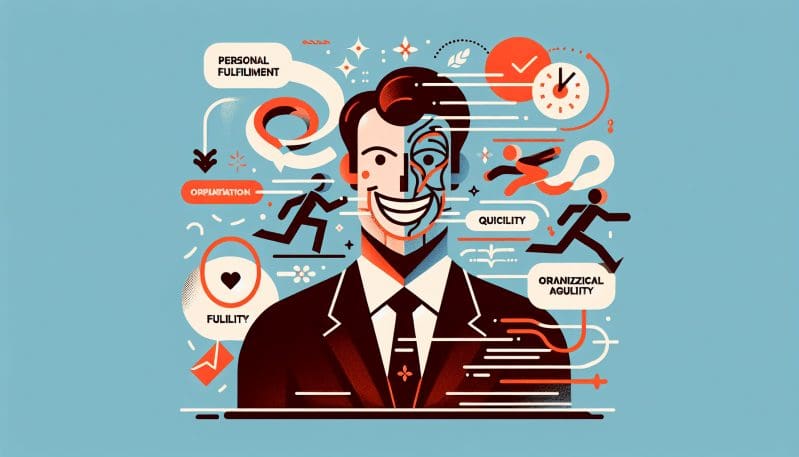The Future of Job Design: Personal Fulfillment Meets Organizational Agility
- Home
- The Future of Job Design: Personal Fulfillment Meets Organizational Agility
- Editors Desk
- March 20, 2024
- 0 Comments
As organizational psychologists and thought leaders, we often ponder the evolving landscape of the workplace. The traditional systems of job design, with their rigid job descriptions and hierarchical structures, are increasingly at odds with the dynamic nature of today’s workforce and business environment. In a world where change is the only constant, both individuals and organizations seek to navigate these waters with grace and efficiency. The new paradigm we are marching toward involves a harmonious blend of personal fulfillment and organizational agility.
No Worker Left Behind is committed to exploring the forefront of work, worker, and workplace transformation – an arena that even the esteemed World Economic Forum doesn’t entirely cover. It’s within these less chartered territories that we’ve found the true opportunity for growth and innovation in job design.
The burgeoning workforce of the digital era craves more than a paycheck; they seek purpose and meaning in their work. Job satisfaction has transcended the confines of material compensation to include mental well-being, opportunities for growth, and a sense of contribution to something larger than oneself.
At the same time, organizations are realizing that agility is not a luxury but a necessity. The ability to pivot rapidly in response to market fluctuations, technological advancements, and global events is what separates the thriving from the mere survivors. This agility is not just about structural flexibility – it’s also about cognitive diversity and emotional intelligence embedded within the workforce.
How do we bridge this gap between individual aspirations and organizational exigencies? The answer lies in innovative job design.
### Redefining Job Design for the Modern Workforce
The concept of job crafting takes center stage in the modern narrative of job design. It diverges from the conventional top-down approach, empowering employees to shape their roles in ways that align with their strengths, interests, and values. It’s a proactive stance where workers collaborate with management to define the contours of their responsibilities, leading to a more engaged and energized workforce.
Another aspect critical to future job design is the development of agile job architectures. Instead of fixed roles, we propose fluid role ecosystems that can expand or contract based on the current needs and strategic goals of the organization. This model values transferable skills and cross-functional collaboration, fostering an environment where learning and adaptability are part of the organizational DNA.
Technology also plays a pivotal role in this evolution. The integration of artificial intelligence, machine learning, and automation into the workplace is not to replace human capacity but to amplify it. By offloading routine tasks to machines, we can liberate human creativity and strategic thinking – the true irreplaceable assets.
### Envisioning a Symbiotic Workplace
In this reimagined job landscape, the dichotomy between personal fulfillment and organizational needs dissolves. When job design is approached as a collaborative process, with an emphasis on individual strengths and a shared vision, the result is a workplace where:
– Individuals thrive , feeling valued and understood, with their potential fully tapped.
– Organizations flourish , endowed with a workforce that is adaptable, innovative, and deeply committed.
– Society benefits , as happier workers contribute to a healthier, more productive social fabric.
Such ecosystems are not a utopian dream; they are within our reach. At No Worker Left Behind, we are dedicated to spreading this vision and providing the frameworks and tools essential to bring it to life.
We invite you to join us in this exciting journey towards a future where job design is as much about personal well-being as it is about business success. Let us come together at the #WorkCongress on May 1, 2024, to further this conversation and turn these ideas into tangible action. For more information and to register, visit [https://workcongress.com](https://workcongress.com).
Job design is no longer about fitting into a mold. It’s about breaking the mold and building a new one that fits us – all of us – so that every worker is left behind no more.

